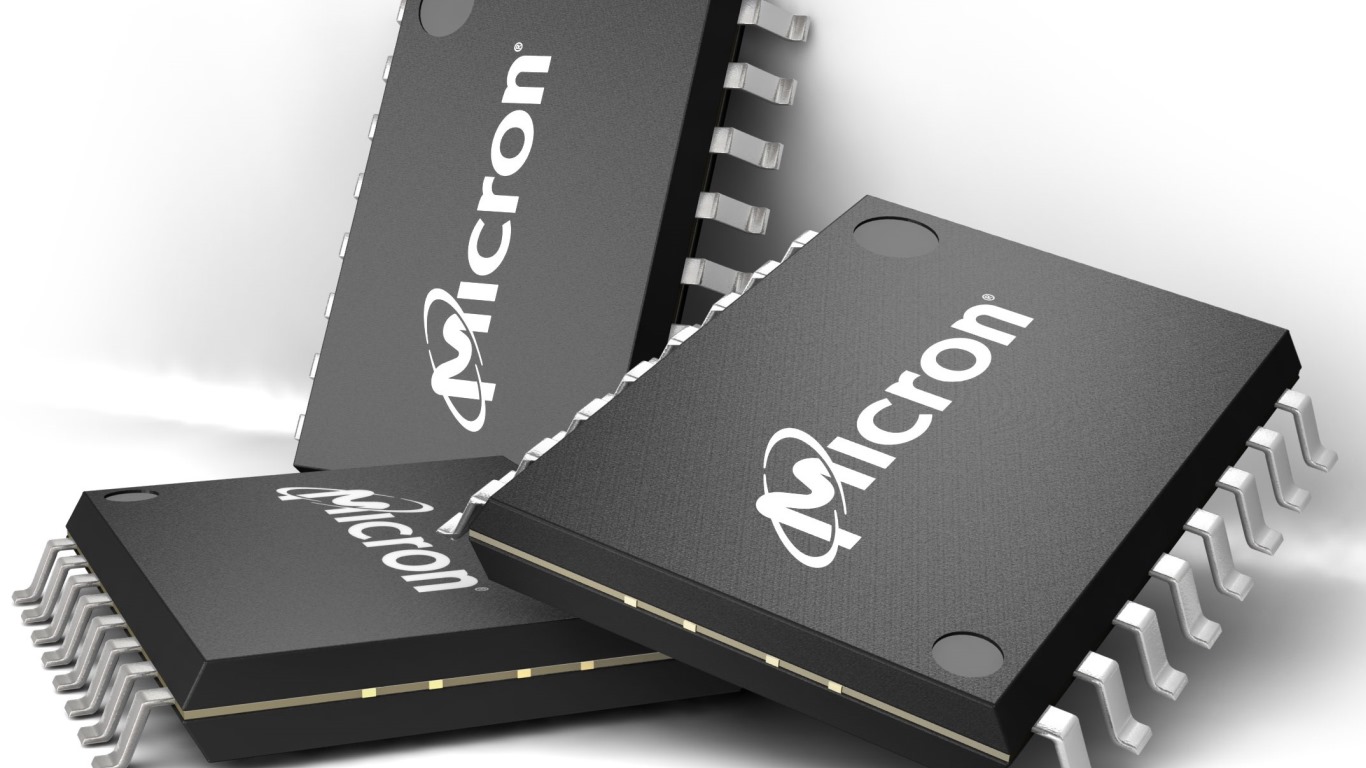Technology
Will a Weak DRAM Market in 2019 Cast a Shadow on the Entire Semiconductor Industry?

Published:
Last Updated:

The decline in the technology sector was broad and swift at the end of 2018. A major market recovery has allowed technology stocks to recover handily as well. With the Nasdaq 100 up about 16% so far in 2019 alone, the move in many of the market’s favorite semiconductor stocks has been even more exaggerated.
It is fair to at least question whether the optimism has risen far more than the actual underlying expectations for what is going on the world of semiconductor stocks. And don’t forget that the underlying demand trends for semiconductors, much more than just the supply and pricing trends, are a global leading indicator because anything and everything you purchase seems to have chips in it these days.
IHS Markit has issued a broad outlook for the semiconductor industry in 2019 with a warning that the DRAM market is expected to shrink by a sharp 22% in 2019. The group warns that recent concerns over market conditions and a sharp downturn in average selling prices will push the global DRAM market down to $77 billion in 2019. This is an instance in which falling prices are meeting weak demand, and that weakness is expected to continue through the third quarter of this year.
Where this gets complicated is how the equity markets will try to look beyond this pressure. The stock market is supposed to work as an evolving price discovery mechanism that attempts to discount the known issues one to two quarters into the future. That said, the markets have been rather unsuccessful in demonstrating that the efficient market hypothesis actually works.
With this report coming out in March, and if the market can theoretically discount bad news for one or two quarters out, it’s fair to ask if the weak forecast through the end of the third quarter is already fully baked into the underlying semiconductor stocks.
On a longer view, IHS Markit is forecasting that supply-and-demand growth will remain in the 20% range in the coming years. The group sees that level as keeping the market generally balanced. Still, the group noted that some periods of oversupply and undersupply are expected while servers and mobile devices will lead the demand categories.
IHS Markit’s forecast further said:
In the longer term, strong demand for server DRAM – especially from Amazon, Microsoft, Facebook, Google, Tencent, Baidu, Alibaba and other hyperscale companies – means the server segment will grow from about 28 percent of bit demand in 2018 to over 50 percent of bit demand in 2023. Smartphone unit shipments and content growth have slowed significantly since 2016, but smartphones rank as the second largest DRAM consumption segment. An average of 28 percent of overall DRAM bit demand will come from smartphones between 2019 and 2023.
Micron Technology Inc. (NASDAQ: MU) is shown to be in third place with 24.0% of the market share of DRAM as of the fourth quarter of 2018, behind SK Hynix (31.9% share) and Samsung (39.9% share). The next company on the list is Nanya with just a 2.5% share, and the rest of the DRAM players do not even have 1% share.
A stock performance review on Finviz.com shows that Micron’s stock price has risen 27% so far in 2019 alone, but it also showed that its stock is down 25% from this time last year. The analysis after the recent earnings report indicated that Micron is slowing down but perhaps not as harshly as some analysts had worried about.
IHS Markit showed that Samsung continues to lead the industry in DRAM volume but with a smaller gap as of the reference period. Samsung’s earnings warning for the first-quarter of 2019 showed a challenging semiconductor environment with an emphasis on DRAM pricing pressures.
Rachel Young, associate director at IHS Markit, said:
The recent decision announced by Micron Technologies to cut memory chip output, in the face of stalling demand is not surprising. In fact, most memory chip manufactures are taking measures to manage supply output and inventory levels, to address softening demand.
The VanEck Vectors Semiconductor ETF (NYSEARCA: SMH) has outperformed the Dow, S&P 500 and Nasdaq 100 handily with year-to-date gains of about 22%. It is also higher by about 2% from this time a year ago. That performance is of course not as tied to Micron because it has only a 4.6% weighting in the exchange traded fund. The larger ETF constituents are Intel (13.65%), Taiwan Semi (9.46%), Nvidia (6.09%), Texas Instruments (5.85%), Broadcom (5.31%), Qualcomm (5.08%) and ASML (4.96%).
This year also has been rather favorable for the semiconductor capital equipment players. Shares of Applied Materials Inc. (NASDAQ: AMAT) were last seen up 21% so far in 2019 but still down 28% from a year ago. KLA-Tencor Corp. (NASDAQ: KLAC) was last seen up 34% so far in 2019 and up 11% from this time a year ago.
It has become hard to lump the semiconductor market altogether as just one group. After all, flash memory, drives, processors and even hard drives all fall under the memory and chip umbrellas. Micron’s $43 billion market cap may be far larger than before it aggressively acquired more into the flash markets, but this is still quite low versus many of the larger companies that dominate the semiconductor market.
It is also worth noting that short sellers may be surrendering in their attacks on the semiconductor leaders.
Thank you for reading! Have some feedback for us?
Contact the 24/7 Wall St. editorial team.